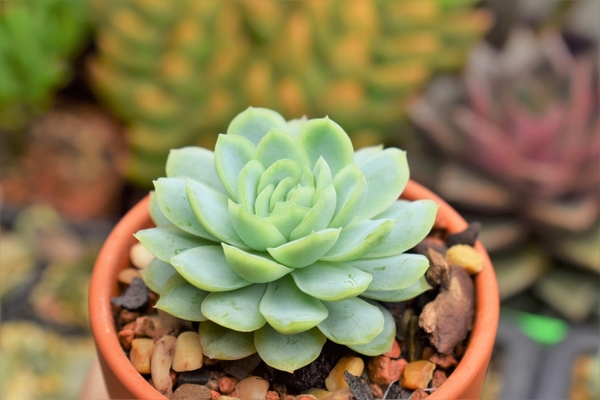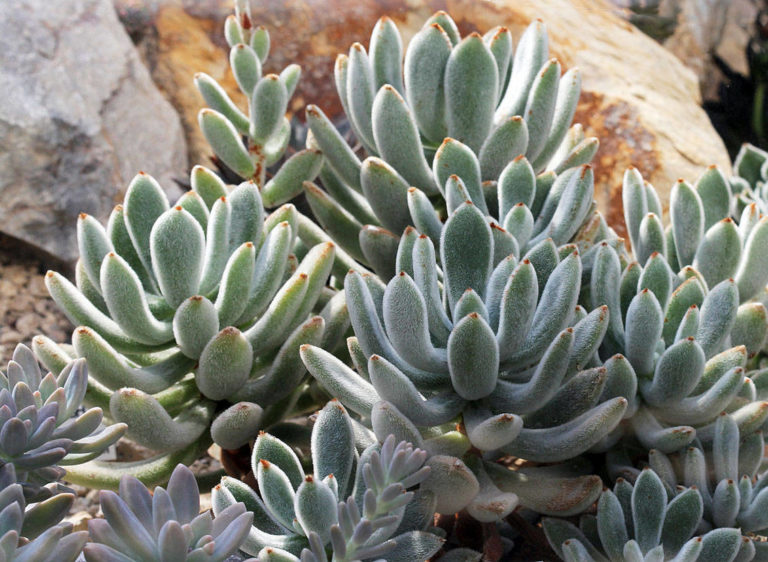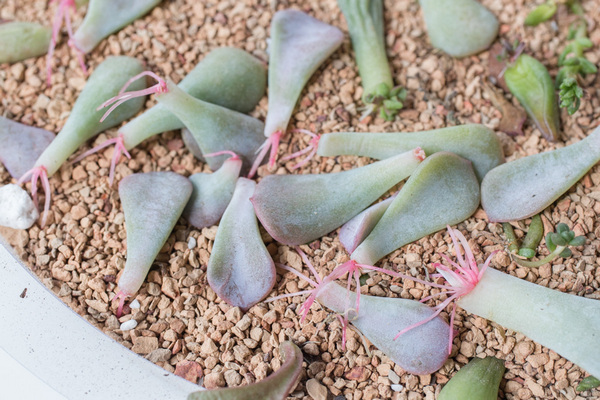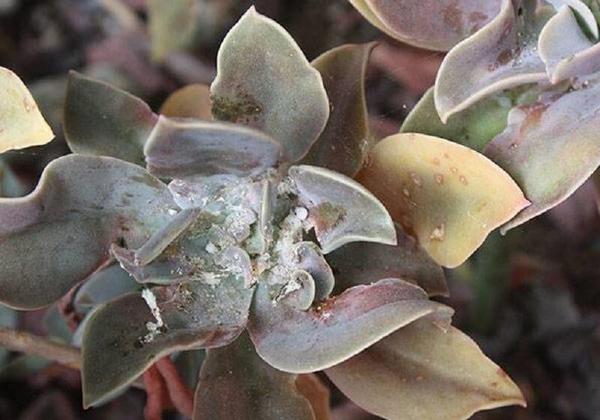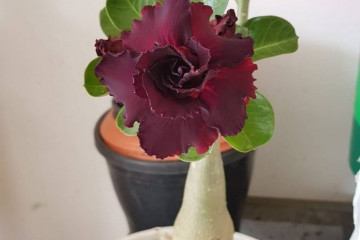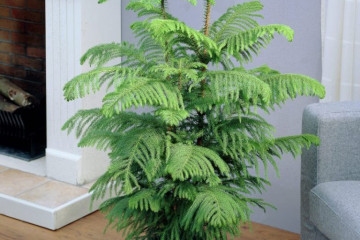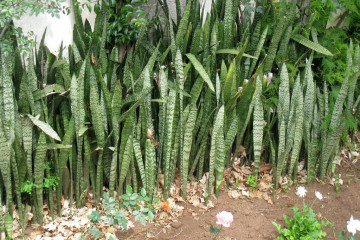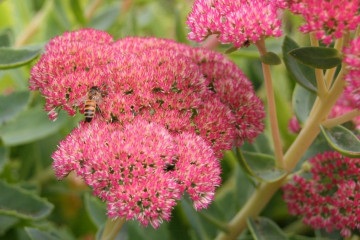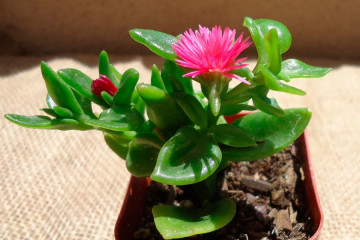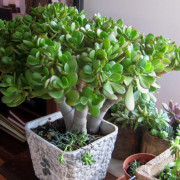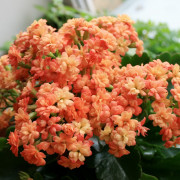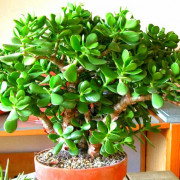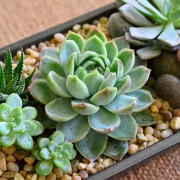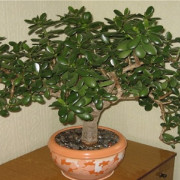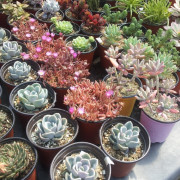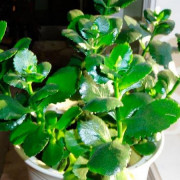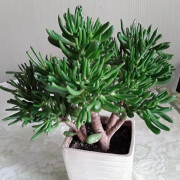Echeveria - care and reproduction at home
Content:
The Echeveria flower is referred to the thermophilic types of plants that live well in ordinary apartments. It is unpretentious to care for; growing at home does not require special skills and knowledge. Another name for the culture is "stone rose".
Echeveria - what kind of flower is it, what family does it belong to
The succulent echeveria (succulent echeveria) belongs to the representatives of the Tolstyankov family. Almost two hundred subspecies live in nature, a small part belonging to the decorative varieties is grown at home.
Brief description, history of origin or selection
Flowers can be found in Mexican, Californian and Peruvian lands. The name of the culture was given in honor of the artist from Mexico, engaged in the description of the flora of the country - Atanasio Echeverria y Godoy.
The foliage of the succulent has a bluish-bluish tinge, in the largest representatives it grows in length up to 25 cm, in width - up to 15 cm. The shoots are miniature, the leaves are collected in dense rosettes. Some subspecies have a smooth surface, others have a pubescent type.
Varieties of indoor plants with names, what they look like
The flower of Echeveria, the species of which is characterized by a variety, has about 200 varieties. They are grown both in classic pots and in vases made of durable glass.
Echeveria graceful (Echeveria elegans)
The elegant indoor Echeveria has a foliage with a gray-bluish color, a flattened rosette. Erect shoots bend over time and begin to creep along the surface. They have the ability to root themselves.
Babies are formed on tall shoots, large specimens grow up to 15 cm in diameter. Leaf plates 5 cm long, 2 cm wide, inflorescences of a pinkish or scarlet hue, a yellow border at the tips of the petals.
Echeveria carnicolor
It has a short branching stem, not exceeding 6 cm. The medium-sized rosette grows up to 15 cm in height, up to 10 cm wide. The foliage is medium-dense, with a meat color, up to 7 cm long.
Echeveria glauca
It is characterized by gray-blue leaf plates, outlined by a pinkish border, with a waxy bloom of a bluish tint. It grows in the shape of a spoon, orange blossoms grow on shoots located on the sides.
Echeveria Black Prince
The culture has a fleshy rosette reaching 15 cm in diameter. The leaf plates are greenish, inflorescences are located on the sides. Echeveria petals Black Prince orange or red-chocolate color, located on high legs.
Echeveria white-haired (Echeveria leucotricha)
It is a representative of pubescent varieties; green leaf plates have a brownish strip along the edge and whitish hairs. Visually similar to a newly born animal, the rosette grows up to 20 cm across.
Echeveria brilliant (Echeveria fulgens Lera)
It is characterized by small size and bushiness, thick branches coming out of the socket. Children develop on the shoots, the leaves have a light green color, the edges are waxy. Blossoms in February days, the petals are reddish.
Echeveria Derenbergii
It has a large number of creeping shoots coming out of a rosette growing up to 6 cm in diameter. At the top of the leaf blades there is a scarlet strip, the middle is whitish or olive-glaucous. Spike-shaped inflorescences include 5 buds; pedicels are up to 6 cm long.
How to care for echeveria at home
Proper care of a succulent flower will allow you to grow a healthy and beautiful specimen that will bloom in accordance with the varietal characteristics. Echeveria care involves special requirements for the substrate, irrigation and fertilization.
Illumination and temperature conditions
The season and secondary factors affect changes in conditions of detention:
- on autumn and winter days, the temperature regime is within 10-16 ℃ above zero, during flowering - 18-21 ℃;
- in the summer and spring months it calmly tolerates low air humidity, lives calmly at +30 ℃.
All hybrid and varietal specimens love good illumination - the density of leaf plates and the color spectrum depend on it.
Watering rules and humidity
Moistening is carried out as the sand dries, in winter - occasionally, so as not to provoke the tilt of the stems. Use aquarium water or water that has been settled for 2-3 days.
Top dressing and soil quality
During the spring and fall months, the culture requires special mixtures for cacti and succulents. They are fed monthly. During the rest period, the procedures are canceled, the rest of the time cannot be fertilized with organic and nitrogenous substances.
Loose sandy soil with minimal nutritional values is preferred. Experienced flower growers use a special soil mixture sold in all flower shops. To prevent the development of root rot, a minimum amount of charcoal is added to the mixture.
Flower container size
The culture has a surface-type root system, so it requires a wide, but shallow capacity. In diameter, it should not exceed the size of the flower itself by more than 2 cm.Containers without drainage holes are not suitable due to the high risk of moisture stagnation and subsequent root rot.
Pruning and replanting
Transplant procedures are carried out annually, with the utmost care: if the roots are damaged, the plant will die. After the purchase, you can transplant it in 2-3 weeks: before the appointed date, the substrate moistening is stopped. Transfer is carried out with absolutely dry earthen coma. Echeveria does not need special pruning - it is enough to regularly remove dried foliage.
Features of flowering plants
Individual hybrids require special conditions, otherwise they will not bloom.
A period of activity and rest
In the spring and summer months, Echeveria blooms for 14-30 days. In winter, most of the members of the genus retire. At this time, the regime is seriously changed: the temperature is lowered to 8-15 ℃ and the irrigation is reduced to one procedure per month.
Types and shape of flowers
Small buds are located in inflorescences, located on the vertical lateral peduncle. The tone of the petals depends on the lighting parameters:
- lack of sun causes yellowness;
- a sufficient amount - a reddish or orange tint.
At the end of the budding period, babies are formed on the peduncles.
Flower propagation methods, when it is better to do it
There are several ways to propagate a flower. The preferred breeding options for Echeveria include an increase in the number of leaves or rosettes.
Reproduction of echeveria by a leaf
The healthiest foliage is selected and separated from the stem. After a week of drying, the outer side is laid out on a pre-moistened substrate and kept until roots appear at +25 ℃. When forming the first outlets, they are seated in separate containers.
Reproduction by rosettes
It is the preferred option, it involves the separation from the mother of the daughter specimen. Having cut off, the place is treated with crushed charcoal (wood or activated), dried for about 12 hours. The outlet is planted in a pre-moistened ground and wait for the appearance of its own root system. Correct implementation of the technique helps to speed up the formation of buds.
Growing problems, diseases and pests
Attacks by parasitic midges and diseases are rare, most of the problems are provoked by the owners themselves. If the culture is improperly looked after and transfused, then a constantly moist substrate will cause the formation of fungal pathologies.
Dangerous pests include mealy and root bugs. Their appearance stops the flowering of echeveria, its growth and development. Determined by deformation changes in the green part and whitish bloom. The flower needs to be planted in a new pot with a complete replacement of the soil and pruning of the affected areas. After the completion of the procedure, treatment is carried out with Aktara and Fitoverm.
How to deal with them
Therapy for diseased specimens depends on the source of the problem:
- when the foliage turns yellow, provoked by liquid stagnation, irrigation is stopped until the substrate is completely dry;
- drying of the lower leaves - no treatment is required, the condition is normal in the winter;
- shriveled and flaccid plates - increase the frequency of hydration.
Echiveria bristly, Black Prince or satin is considered an original flower, it is loved by flower growers. It is used to decorate apartments, winter gardens and greenhouses. Caring for echeveria at home does not cause problems, but experienced gardeners remind that waterlogging of sand in pots is a path to crop loss.

